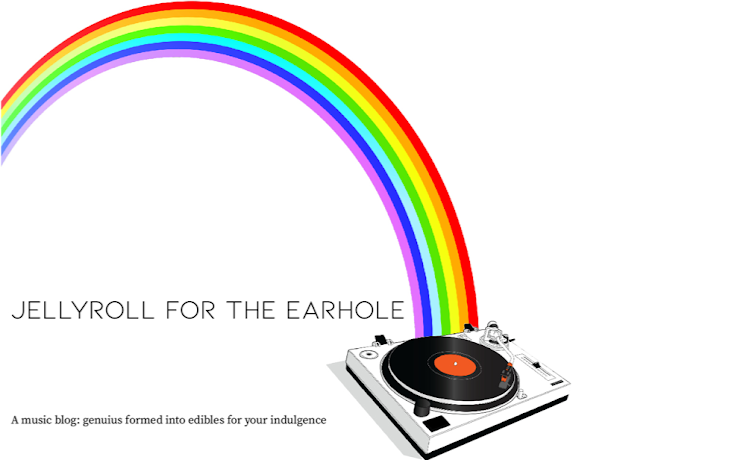While on the subject (see previous post), here's a band of four young glamorpusses doing a tribute to Ono's legendary Cut Piece (originally performed in 1964 and more recently in 2003).
An even more glamorpuss take on the band can be seen in this video.
A film of Ono perfoming Cut Piece.
A description of the piece:
Ono’s work related destruction to interpersonal, often intimate, human
relations. This element was particularly thought-provoking in Cut
Piece. Ono sat motionless on the
stage after inviting the audience to come up and cut away her clothing,
covering her breasts at the moment of unbosoming. Cut Piece entailed a
disrobing, a denouement of the reciprocity between exhibitionism and
scopic desires [scopic being a belabored way of saying the experience that the subject goes through in its interaction with the other] between victim and assailant, between sadist and
masochist: and, as a heterosexual herselft, Ono unveiled the gendered
relationship of male and female subjects as objects for each other. Kristine Stiles, 1998
Wednesday, August 8, 2012
Sunday, August 5, 2012
Yoko Oh No
Long before she encountered that Beatle, Yoko Ono blazed a brilliant kind of trajectory of her own. Art critic Peter Frank described her this way:
Well before she emerged into popular awareness as John Lennon's wife, Yoko Ono had established herself in vanguard art and music circles as one of the most daring, innovative and eccentric artist-performers of her time. As one of the founders of the Fluxus movement at the beginning of the 1960s, Ono helped identify and define the playful, subversive, visionary sensibility that has undergirded experimentation in all the arts ever since. Her poem-like verbal scores, her films, and her staged performances anticipated everything from minimalism to performance art, the furthest reaches of new cinema to the most extreme of Punk-New Wave music.That legacy is mostly pushed aside next to her role as Beatles destroying dragon lady. Of course, this isn't true. That story would be far more complicated. Certainly she didn't deserve much of the grief and slime flung at her, then or now. (Ono addresses this point with her critics in her song Yes, I'm a Witch [1974].) The truth is, she never shaped John Lennon into anything he didn't want to be. (A much stronger defense of her can be seen here.) Granted, she has never been well understood. According to the tattling memoir of a former employee, she may've been more interested in her own musical ambitions than Lennon's. (Ono had already performed at Carnegie Hall in 1961.) Though, for her part, she would give Lennon access to the art world. Where Ono's life or work are concerned it's fair to say that none of it gains much favor with only a cursory understanding. (Like the artist herself, her work is both severely complicated and extremely simple.) What she did have was enough force of personality to be able stand with—with, not behind—one of the strongest artistic characters of the 20th century. (Lennon's first wife Cynthia accused him of an attraction to strong women, and in less charitable moments, having a "mommy complex.") As an artist, in fact, Lennon claimed it was her work that influenced him. (Lyrics for Imagine came as a result of reading her book Grapefruit, he would say.) She made him happy in a way no one else did or could; clearly, he was smitten. But for the legacy of her own work, that may have been better served had she never met him.
(And who hasn't fallen in love at least once in their life with someone their family and friends didn't like?)
In 1970 John and Yoko, along with Ringo on drums and Beatle cohort Klaus Voorman on bass, recorded a group of songs in one improvised session. (One imagines Ringo shaking his head in disbelief from the stool.) With an additional session with avant jazzer Ormette Coleman, the sessions would become the Plastic Ono Band album. Ono's vocals were a series of abstract screams, shrieks, and various throaty calesthenics forged into a kind of vocal tsunami (and a little like the break in Surfin' Bird). In Japanese musical tradition this is very much like hetai, a style born out of Kabuki theater. One critic described her vocals as Zen vaudeville.
Upon its release the album found little critical support (although, notably, Lester Bangs and a few others would disagree). You can see how Lennon's audience might have thought she was stealing his head. What's particularly noteworthy about this piece, besides Ono, is Lennon's most un-Beatle like guitar playing, a style wild and raging with abandon like Tomorrow Never Knows played through a randomizer. It's easy to see how the collective jaws of Beatles' fans might've hit the floor.
The first time I heard Why? I was floored. Even all these years later, it's still flooring—it's music as emotional karate. The fact that John Lennon would embrace this stuff only speaks better of him.
Maybe Zen slapstick would be the better description.
What I think we should do in life is to keep dancing rather than marching. Yoko Ono, 2009
Just discovered this: Yoko and John onstage with Frank Zappa and the Mothers for an off the cuff performance. May give some hint as to why Yoko wasn't, er, fully appreciated. (Note how some members of the band go Ono at the end.) John is unfazed. Clearly, Yoko is fearless.
Subscribe to:
Posts (Atom)



